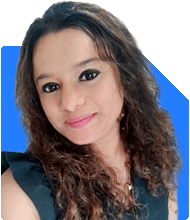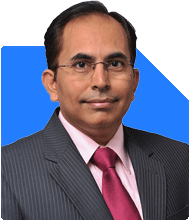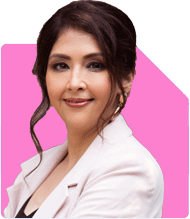How can I invest my gratuity (Rs 6 lakhs) for aggressive growth within 3-4 years?
Ramalingam Kalirajan |10881 Answers |Ask -Follow
Mutual Funds, Financial Planning Expert - Answered on Apr 04, 2025
He has an MBA in finance from the University of Madras and is a certified financial planner.
He is the director and chief financial planner at Holistic Investment, a Chennai-based firm that offers financial planning and wealth management advice.... more

Hi Sir, I'm(33yo /M) looking for guidance on investing rs6 lakhs from my gratuity. I've a diversified portfolio including debt, equity and gold. I'm aiming for growth over a 3-4 year timeframe,(aggressive mindset) but I'm also mindful of the current equity market risks. Could you pls advise investment options that align with my risk tolerance and growth objectives? (Prefer: Gold or Equity Market)
Understanding Your Investment Horizon and Risk Tolerance
Your 3-4 year time frame suggests that you need liquidity within a relatively short period.
Since you are open to high risk for growth, equity-heavy investments suit your needs. However, market volatility can impact returns in the short term.
Gold can act as a hedge against market downturns but may not provide significant growth over such a short period.
Suggested Investment Allocation
1. Equity Mutual Funds – 60% Allocation (Rs 3.6 lakh)
Actively managed equity funds can deliver strong returns over your time frame.
Large and mid-cap funds offer a balance of stability and growth.
Small-cap funds can provide high returns but come with higher risk.
Sectoral and thematic funds can be considered, but they require close monitoring.
Investing in a mix of these categories can optimize risk and return potential.
2. Gold Investment – 25% Allocation (Rs 1.5 lakh)
Gold can act as a safeguard against equity market fluctuations.
Gold ETFs or sovereign gold bonds (SGBs) are preferable to physical gold due to ease of liquidity and additional interest in SGBs.
Gold prices can be volatile in the short term, so a 3-4 year horizon may not always guarantee high returns.
3. Balanced Hybrid Mutual Funds – 15% Allocation (Rs 90,000)
Hybrid funds blend equity and debt to reduce risk while offering reasonable growth.
They are useful for managing market volatility over a 3-4 year period.
Dynamic asset allocation funds adjust between equity and debt based on market conditions.
Factors to Consider While Investing
1. Equity Market Risks
The stock market can be unpredictable, especially in the short term.
Staying invested for at least 3-4 years can help ride out market fluctuations.
Avoid timing the market. Staggered investment through SIPs may reduce risk.
2. Gold Market Trends
Gold prices depend on global economic factors and inflation trends.
A 3-4 year horizon may not always align with gold’s long-term growth pattern.
Diversifying within gold (SGBs, ETFs) can enhance liquidity and returns.
3. Liquidity Considerations
Equity mutual funds offer high liquidity but can be affected by short-term volatility.
SGBs have a lock-in period, but early exit options exist after five years.
Balanced hybrid funds provide moderate liquidity with reduced volatility.
Taxation Impact on Your Investments
Equity Mutual Funds: LTCG above Rs 1.25 lakh is taxed at 12.5%. STCG is taxed at 20%.
Gold Investments: Taxation depends on whether you invest in physical gold, ETFs, or SGBs.
Hybrid Funds: Tax treatment depends on the equity-to-debt ratio of the fund.
Consider tax-efficient withdrawals if you plan to redeem funds within 3-4 years.
Final Insights
A mix of equity, gold, and hybrid funds aligns with your aggressive growth objective.
Diversification can help manage risk while maximizing potential returns.
Monitor your investments regularly and adjust if needed based on market conditions.
If liquidity is a concern, avoid investments with long lock-in periods.
Best Regards,
K. Ramalingam, MBA, CFP,
Chief Financial Planner,
www.holisticinvestment.in
https://www.youtube.com/@HolisticInvestment
Best Regards,
K. Ramalingam, MBA, CFP,
Chief Financial Planner,
www.holisticinvestment.in
https://www.youtube.com/@HolisticInvestment
You may like to see similar questions and answers below
Ramalingam Kalirajan |10881 Answers |Ask -Follow
Mutual Funds, Financial Planning Expert - Answered on Apr 24, 2024
Jinal Mehta | Answer |Ask -Follow
Financial Planner - Answered on Feb 25, 2024
Ramalingam Kalirajan |10881 Answers |Ask -Follow
Mutual Funds, Financial Planning Expert - Answered on May 26, 2024
Ramalingam Kalirajan |10881 Answers |Ask -Follow
Mutual Funds, Financial Planning Expert - Answered on Apr 30, 2024
Janak Patel |71 Answers |Ask -Follow
MF, PF Expert - Answered on Apr 09, 2025
Dr Dipankar Dutta |1839 Answers |Ask -Follow
Tech Careers and Skill Development Expert - Answered on Dec 13, 2025
Dr Dipankar Dutta |1839 Answers |Ask -Follow
Tech Careers and Skill Development Expert - Answered on Dec 13, 2025
Mayank Chandel |2575 Answers |Ask -Follow
IIT-JEE, NEET-UG, SAT, CLAT, CA, CS Exam Expert - Answered on Dec 13, 2025
Radheshyam Zanwar |6742 Answers |Ask -Follow
MHT-CET, IIT-JEE, NEET-UG Expert - Answered on Dec 13, 2025
Mayank Chandel |2575 Answers |Ask -Follow
IIT-JEE, NEET-UG, SAT, CLAT, CA, CS Exam Expert - Answered on Dec 13, 2025
Mayank Chandel |2575 Answers |Ask -Follow
IIT-JEE, NEET-UG, SAT, CLAT, CA, CS Exam Expert - Answered on Dec 13, 2025
Kanchan Rai |646 Answers |Ask -Follow
Relationships Expert, Mind Coach - Answered on Dec 12, 2025
Ravi Mittal |677 Answers |Ask -Follow
Dating, Relationships Expert - Answered on Dec 12, 2025
Ramalingam Kalirajan |10881 Answers |Ask -Follow
Mutual Funds, Financial Planning Expert - Answered on Dec 12, 2025
Ramalingam Kalirajan |10881 Answers |Ask -Follow
Mutual Funds, Financial Planning Expert - Answered on Dec 12, 2025


























